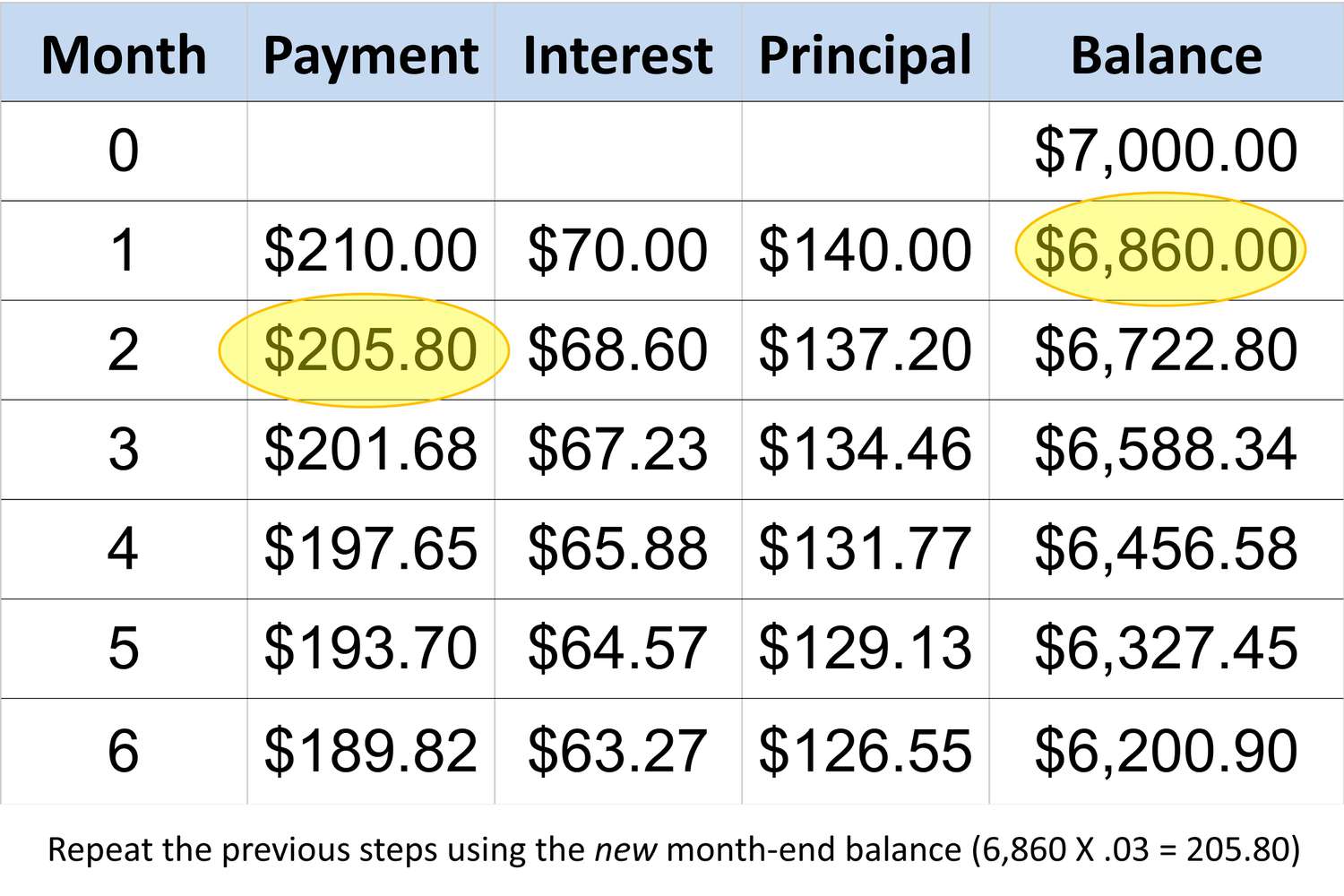Home>Finance>How Is Minimum Payment Determined For Synchrony Credit Cards


Finance
How Is Minimum Payment Determined For Synchrony Credit Cards
Published: February 27, 2024
Learn how Synchrony determines the minimum payment for their credit cards. Find out the key factors and tips to manage your finances effectively.
(Many of the links in this article redirect to a specific reviewed product. Your purchase of these products through affiliate links helps to generate commission for LiveWell, at no extra cost. Learn more)
Table of Contents
Introduction
Introduction
When it comes to managing credit card payments, understanding the concept of minimum payments is crucial for maintaining financial stability. In this article, we will delve into the intricacies of how minimum payments are determined for Synchrony credit cards. By gaining insight into this process, cardholders can make informed decisions that align with their financial goals and responsibilities.
Synchrony Financial is a prominent issuer of credit cards, offering a diverse range of options tailored to various consumer needs. Understanding how minimum payments are calculated for Synchrony credit cards is essential for responsible financial management and avoiding potential pitfalls associated with credit card debt.
Throughout this article, we will explore the factors that influence minimum payments, the calculation methods employed by Synchrony, and the importance of making minimum payments. Additionally, we will provide valuable tips for effectively managing minimum payments, empowering cardholders to navigate their financial obligations with confidence and prudence.
Understanding Minimum Payment
Before delving into the specifics of minimum payments for Synchrony credit cards, it’s essential to grasp the concept of minimum payment itself. The minimum payment is the lowest amount a cardholder must pay by the due date to maintain the account in good standing and avoid late fees or potential negative impacts on their credit score.
When it comes to Synchrony credit cards, the minimum payment requirement is influenced by various factors, including the outstanding balance, interest accrued, and any fees or charges incurred during the billing cycle. Understanding the minimum payment is crucial, as it serves as a fundamental component of responsible credit card management.
By comprehending the significance of the minimum payment, cardholders can make informed decisions regarding their financial obligations, thereby fostering a healthy and sustainable approach to credit card usage. It’s important to recognize that while making the minimum payment keeps the account in good standing, it may result in the accrual of interest on the remaining balance, potentially leading to long-term debt if not managed prudently.
Factors Affecting Minimum Payment
The minimum payment for Synchrony credit cards is influenced by several key factors, each playing a significant role in determining the amount due. These factors include the outstanding balance, annual percentage rate (APR), and any additional fees or charges incurred during the billing cycle.
1. Outstanding Balance: The amount owed on the credit card directly impacts the minimum payment. As the outstanding balance increases, the minimum payment also rises accordingly. It’s important for cardholders to be mindful of their spending and strive to maintain a balance that aligns with their financial capabilities.
2. Annual Percentage Rate (APR): The APR, representing the annualized interest rate applied to outstanding balances, significantly influences the minimum payment. Higher APRs lead to increased interest charges, consequently affecting the minimum payment amount. Understanding the implications of the APR is crucial for managing credit card balances effectively.
3. Additional Fees and Charges: Fees such as late payment fees or over-limit charges can impact the minimum payment. These additional costs contribute to the total amount due, potentially increasing the minimum payment beyond the standard monthly interest and principal repayment.
It’s imperative for Synchrony credit cardholders to consider these factors when planning their monthly payments. By recognizing the impact of the outstanding balance, APR, and additional fees, cardholders can make informed decisions regarding their financial commitments, thereby fostering responsible credit card management and mitigating the risk of accumulating excessive debt.
Calculation of Minimum Payment
The calculation of the minimum payment for Synchrony credit cards involves a structured approach that considers various elements to determine the required monthly payment. While specific methodologies may vary, a common approach to calculating the minimum payment includes factors such as the outstanding balance, interest accrued, and any applicable fees or charges.
1. Outstanding Balance: The outstanding balance on the credit card serves as a fundamental component in the minimum payment calculation. Typically, a percentage of the outstanding balance is included in the minimum payment requirement, ensuring that cardholders make progress in reducing their overall debt while meeting their monthly obligations.
2. Interest Accrued: The interest accrued on the outstanding balance contributes to the minimum payment amount. As interest accumulates based on the APR and the outstanding balance, a portion of the minimum payment is allocated to cover the monthly interest charges, facilitating the gradual reduction of the overall debt burden.
3. Additional Fees and Charges: Any applicable fees or charges, such as late payment fees or over-limit fees, are factored into the minimum payment calculation. These fees contribute to the total amount due, impacting the minimum payment and emphasizing the importance of timely and responsible credit card management.
By integrating these components, Synchrony determines the minimum payment required from cardholders each month. It’s essential for cardholders to comprehend the calculation methodology, as it empowers them to anticipate their financial obligations and make informed decisions regarding their credit card payments. Understanding how the minimum payment is calculated fosters responsible financial management and facilitates the development of effective strategies for debt repayment and overall financial well-being.
Importance of Making Minimum Payments
Making minimum payments on Synchrony credit cards holds significant implications for cardholders’ financial well-being and credit standing. While it may seem like a routine obligation, understanding the importance of meeting the minimum payment requirement is crucial for maintaining financial stability and managing credit card debt effectively.
1. Avoiding Late Fees and Penalties: By making at least the minimum payment by the due date, cardholders can prevent incurring late fees and penalties, which not only contribute to increased financial burden but also negatively impact their credit standing. Timely minimum payments demonstrate responsible financial behavior and contribute to maintaining a positive credit history.
2. Preserving Credit Score: Consistently making minimum payments is vital for preserving and improving one’s credit score. Payment history is a significant factor in credit scoring models, and delinquencies can lead to adverse effects on an individual’s creditworthiness. By meeting the minimum payment requirement, cardholders can uphold a positive payment history, thereby enhancing their credit profile.
3. Managing Debt Effectively: While making minimum payments may not significantly reduce the principal balance in the short term, it helps in managing debt by keeping the account in good standing. This approach provides cardholders with the opportunity to strategize and allocate additional funds towards debt repayment, gradually reducing the outstanding balance over time.
4. Financial Discipline and Responsibility: Meeting the minimum payment obligation instills financial discipline and responsibility. It encourages cardholders to prioritize their financial commitments and develop prudent money management habits, fostering a proactive approach to credit card usage and overall financial well-being.
Understanding the importance of making minimum payments on Synchrony credit cards empowers cardholders to approach their financial obligations with diligence and foresight. By recognizing the broader implications of meeting the minimum payment requirement, individuals can navigate their credit card responsibilities effectively, mitigate potential financial challenges, and work towards long-term financial stability and security.
Tips for Managing Minimum Payments
Effectively managing minimum payments for Synchrony credit cards is essential for maintaining financial stability and navigating credit card obligations responsibly. By implementing strategic approaches and adopting prudent financial practices, cardholders can optimize their minimum payment management while working towards long-term financial well-being.
1. Budgeting and Planning: Establishing a comprehensive budget that encompasses all financial obligations, including credit card payments, is crucial. By prioritizing the allocation of funds for minimum payments within the budget, cardholders can ensure timely and consistent payments, fostering responsible credit card management.
2. Paying Above the Minimum: While making the minimum payment is necessary to maintain the account in good standing, allocating additional funds towards the credit card balance whenever possible accelerates debt reduction. By paying above the minimum, cardholders can mitigate the impact of accruing interest and work towards reducing the overall outstanding balance more effectively.
3. Monitoring Spending Habits: Conscious monitoring of spending habits and exercising prudence in credit card usage can contribute to maintaining a manageable outstanding balance. By being mindful of expenditures and avoiding unnecessary debt accumulation, cardholders can alleviate the burden of high minimum payments and facilitate more efficient debt repayment.
4. Utilizing Payment Reminders: Leveraging payment reminders, whether through mobile apps, email notifications, or calendar alerts, can help ensure that minimum payments are made punctually. Timely payments not only prevent late fees but also contribute to a positive payment history, bolstering the cardholder’s credit profile.
5. Seeking Financial Assistance if Needed: In cases of financial hardship or unexpected challenges, seeking assistance from Synchrony or exploring debt management options can provide relief. Initiating proactive communication with the credit card issuer can lead to potential solutions, such as temporary payment arrangements or hardship programs, offering support during challenging circumstances.
By integrating these tips into their financial management approach, Synchrony credit cardholders can navigate minimum payments effectively, mitigate the impact of accruing interest, and work towards reducing their outstanding balances, fostering a proactive and sustainable approach to credit card debt management.
Conclusion
Understanding the intricacies of minimum payments for Synchrony credit cards is instrumental in fostering responsible financial management and navigating credit card obligations effectively. By delving into the factors influencing minimum payments, the calculation methodologies employed, and the broader implications of meeting this financial obligation, cardholders can approach their credit card responsibilities with prudence and foresight.
It is essential for Synchrony credit cardholders to recognize the significance of making at least the minimum payment each month. This practice not only safeguards against late fees and penalties but also contributes to preserving a positive credit history, thereby enhancing one’s creditworthiness. Moreover, managing minimum payments strategically, such as by paying above the minimum when feasible and monitoring spending habits, facilitates effective debt reduction and long-term financial stability.
By embracing proactive financial practices, such as budgeting, utilizing payment reminders, and seeking assistance when needed, cardholders can optimize their approach to managing minimum payments, fostering a sustainable and disciplined approach to credit card usage. Ultimately, the conscientious management of minimum payments contributes to mitigating the impact of accruing interest, reducing outstanding balances, and working towards overall financial well-being.
In conclusion, the comprehension and effective management of minimum payments for Synchrony credit cards empower cardholders to navigate their financial obligations with confidence and prudence. By integrating prudent financial practices and strategic approaches to minimum payment management, individuals can cultivate a proactive and sustainable approach to credit card debt, ultimately working towards long-term financial security and stability.














